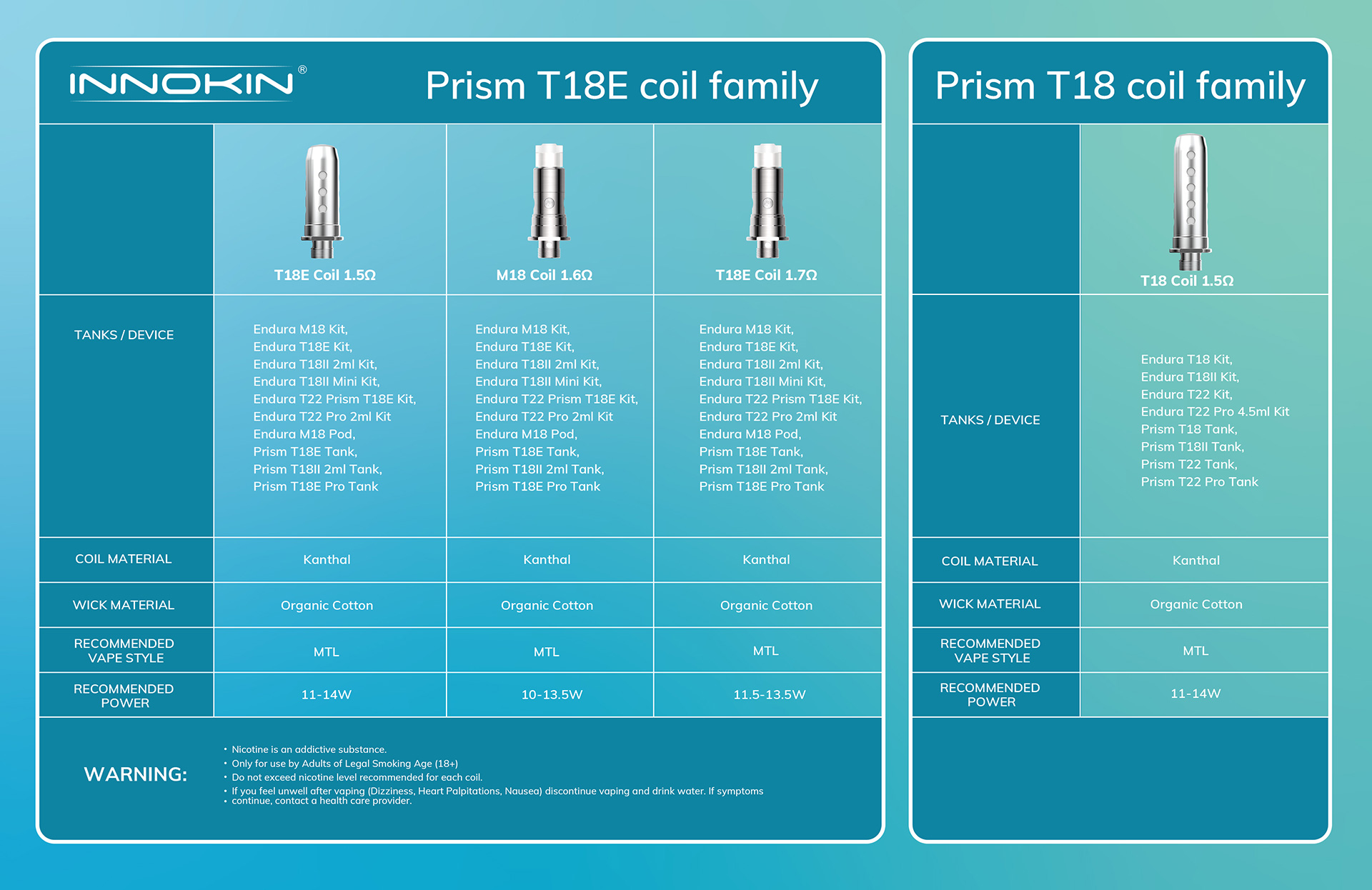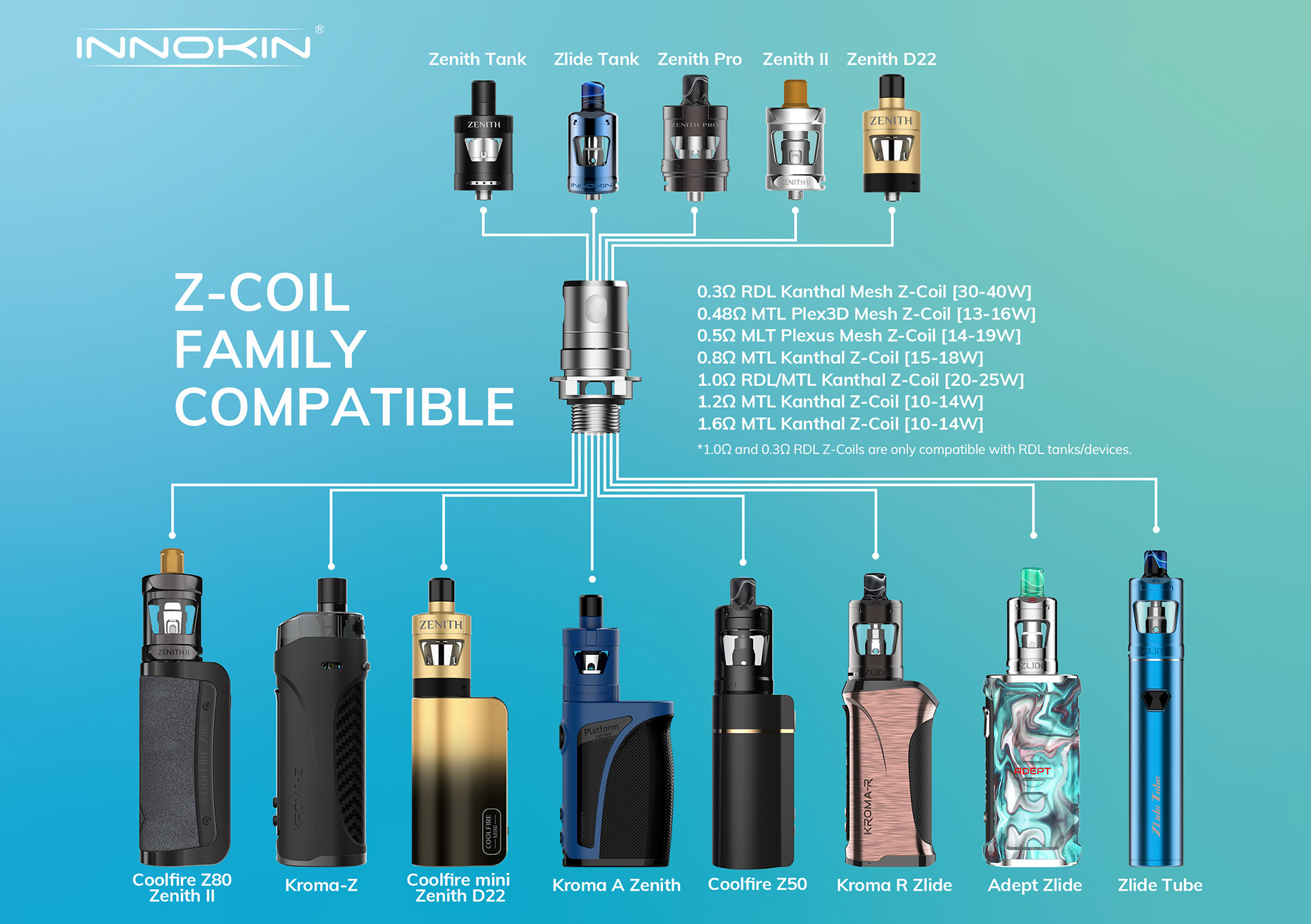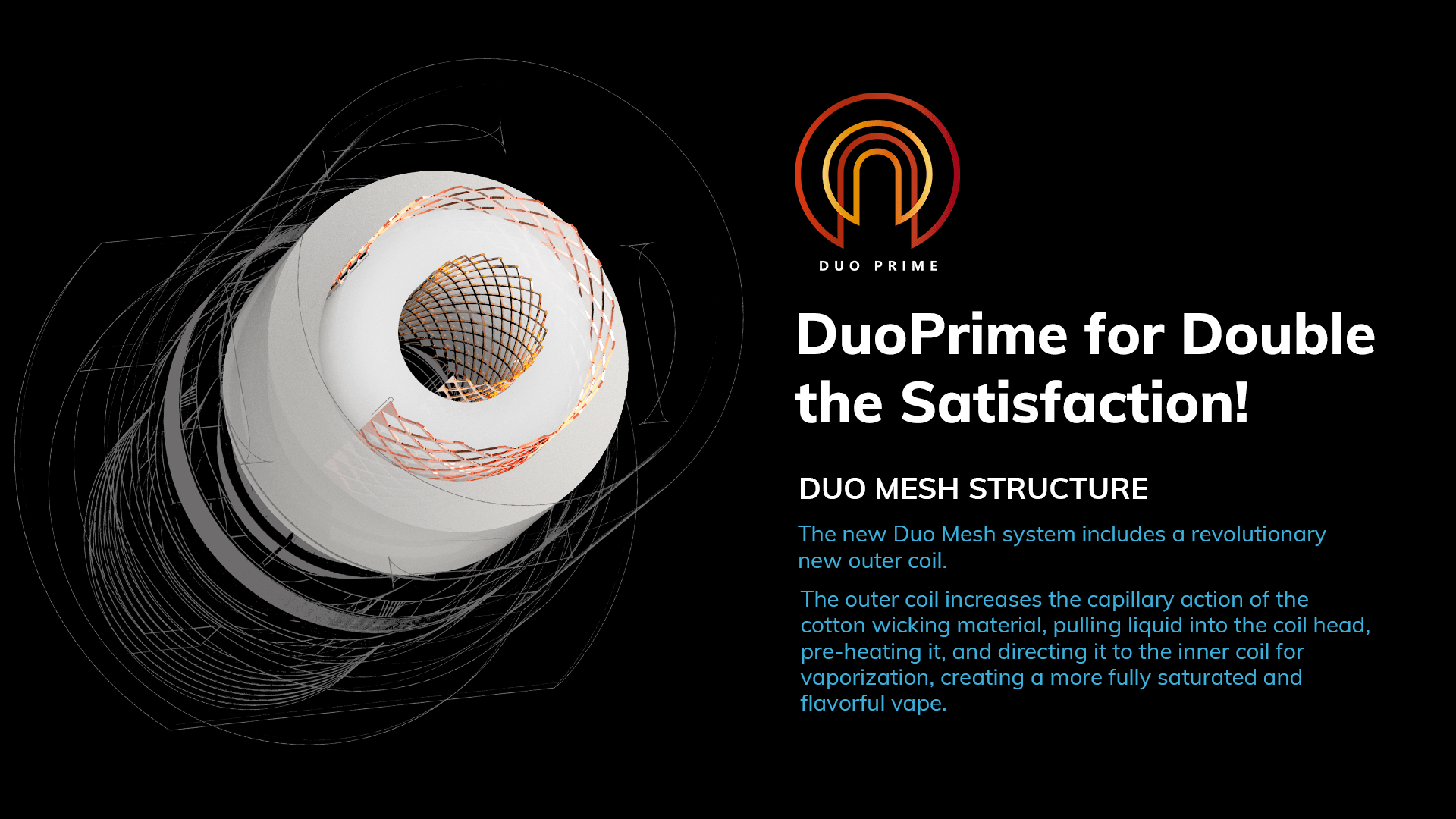
Vape Coils Explained: The Ultimate Guide for Beginners
The world of vaping can sometimes be a confusing place. There are lots of specialised terminologies, thousands of devices to choose from and countless different styles of vaping.
Today, we’re going to take a closer look at coils, one of the simplest and most important parts of any vaping device!
How do vape coils work?
Coils, which are sometimes referred to as atomisers, are the component of your vaping device that creates vapour.
They are made of three components: the heating element, wicking material and casing. The casing of a coil simply holds everything together and allows for the coil to be easily installed in your tank or pod.
The wicking material, typically organic cotton, draws e-liquid in and feeds it to the heating element.
The heating element, often referred to as the coil, is made from resistance wire, either wrapped as a traditional coil, or made from strips of resistance mesh (this is known as a mesh coil).
When you press the power button on your vape and inhale, the coil heats up, and vaporised e-liquid mixes with air to produce vapour. The heat draws more e-liquid into the coil from the wicking material and the wicking material likewise drawn more e-liquid in from your tank or pod.
This cycle relies on a fine balance of heat and wicking efficiency, which is why we spend so much time fine-tuning our coil designs!
What are the different types of coil?
MTL/”mouth-to-lung” coil
MTL or “mouth-to-lung” coils are designed to replicate the experience of smoking a traditional cigarette. This means a tight draw and low power output. Generally, MTL coils are designed to be used with higher nicotine strength e-liquids, to further simulate the “throat hit” of a cigarette.
You can identify a coil head that’s intended for MTL vaping by looking at the diameter of the coil inside. The narrow bore of an MTL coil is suited for very tight airflow, while maximising flavour output even at low wattages.
MTL coils are almost always made from standard round wire, as this design is well suited to low power output. Since MTL coils are intended for low power output, it’s important not to exceed the recommended wattage range. Innokin coils are always clearly marked with their recommended wattage range, so take note of this before turning the power-up!
An example of an MTL coil would be the Prism series coils, which are compatible with the Innokin Endura T22 Pro.

DL/”direct-to-lung” coil
DL or “direct-to-lung” coils are designed to accommodate high power, large airflow and massive vapour production. These days, most DL coils use strips of mesh instead of traditional round wire.
You can identify a coil head that’s intended for DL vaping by looking at the diameter of the coil inside. The wide bore of a DL coil allows for maximum airflow, vapour production and heat dissipation. Generally speaking, DL coils have a recommended power output of 40W and above.
Examples of DL coils include the Z-force coils compatible with the Innokin Kroma 217 kit.
RDL/”restricted-direct-to-lung” coil
RDL coils occupy the space between MTL and DL coils. They are an excellent choice for vapers who want to experience intense flavours and increased vapour production, but also want to conserve battery life and e-liquid consumption.
Due to their mid-range power requirements, RDL coils may use traditional round wire, or mesh strips depending on their design. Generally speaking, RDL coils have a recommended power output of 20-40W.
An example of an RDL coil is the 0.3Ohm Z-coil, which is compatible with the Innokin Coolfire Z80 kit.

Round wire vs mesh – what’s the difference?
Traditional round wire coils and coils made using mesh strips are both extremely common, but what’s the difference and which one is right for you?
Typically, round wire is used for lower-wattage coil heads. This is because they perform very well at low temperatures. Also, the manufacturer can easily tweak performance by changing the wire thickness or number of wraps.
Mesh strips are normally used for medium and high-wattage coil heads. This is because mesh coils heat very quickly and cover a large surface area, which is ideal for e-liquid absorption at high temperatures. Mesh coils also typically result in low overall resistance relative to their mass, which can put a strain on smaller batteries designed for low power output.
DuoPrime – a new era for coil design

At Innokin, we’re always looking for ways to improve the vaping experience. As mentioned previously, mesh coils are excellent at increasing e-liquid absorption.
What if there was a way to increase wicking efficiency even more using mesh strips?
With this in mind, our engineers designed DuoPrime technology. DuoPrime works by implanting an outer layer of mesh between the wicking material and the inner coil.
The outer layer of mesh heats slowly, but this is enough to draw e-liquid into the coil rapidly. This fundamentally changes coil design, drastically increasing coil longevity, saturation and flavour production.

























